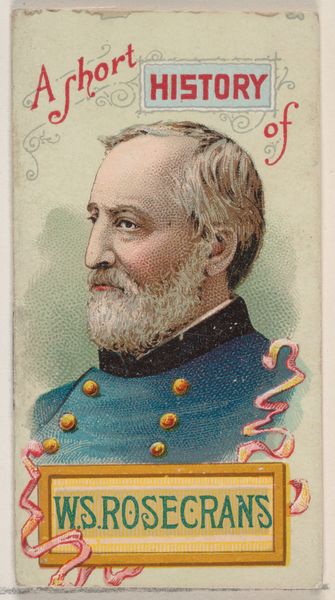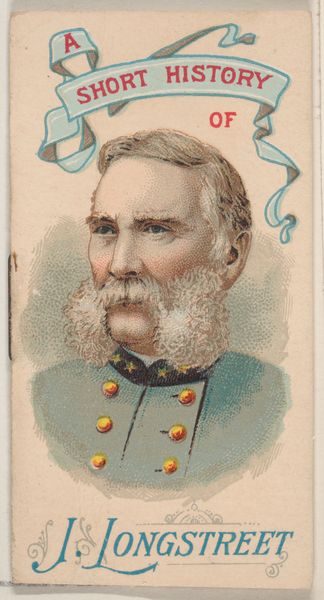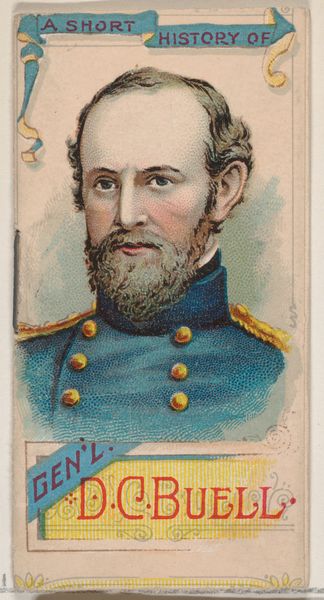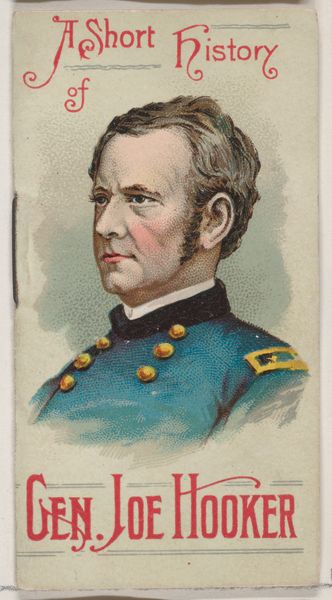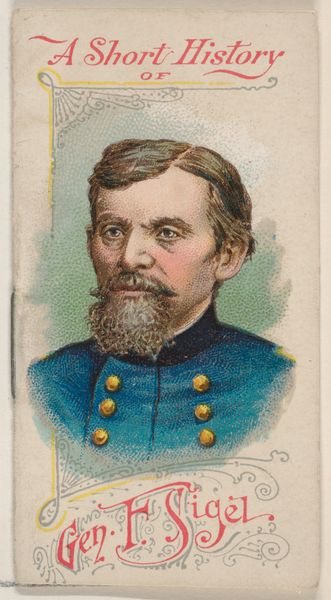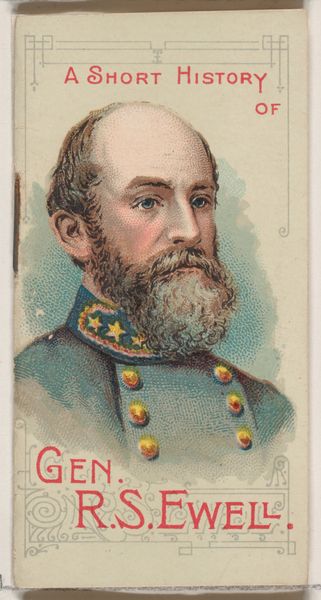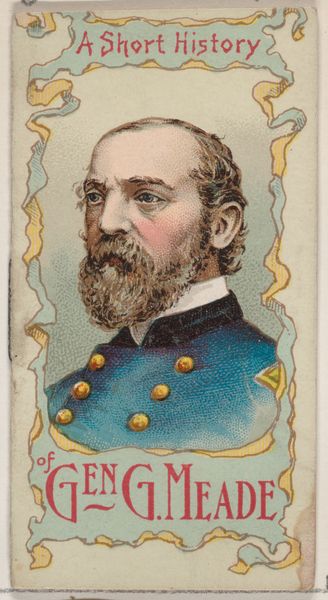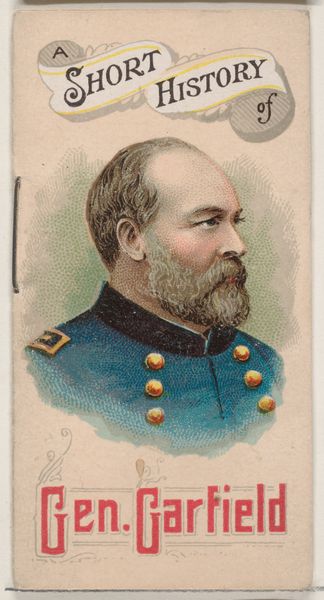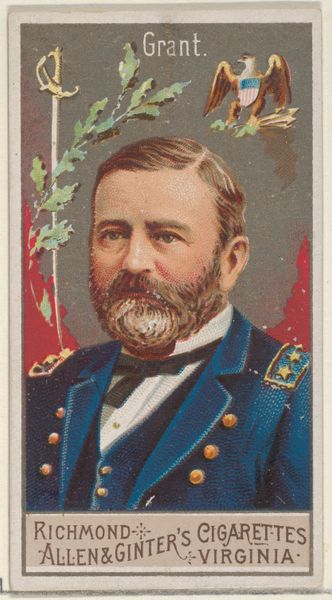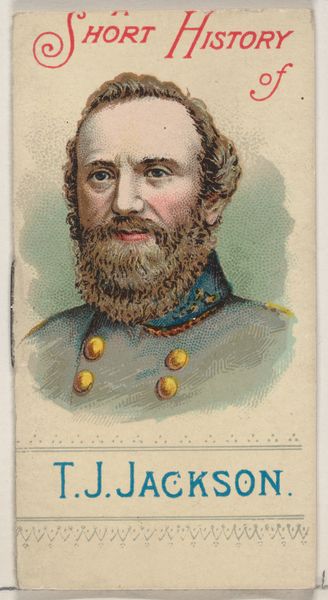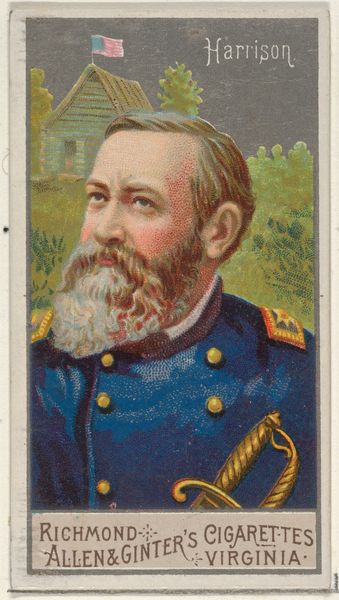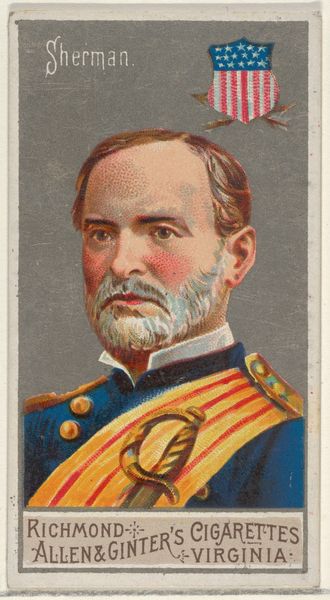
A Short History of General Oliver Otis Howard, from the Histories of Generals series of booklets (N78) for Duke brand cigarettes 1888
0:00
0:00
drawing, lithograph, print
#
portrait
#
drawing
#
lithograph
# print
#
history-painting
#
academic-art
Dimensions: Overall (Booklet closed): 2 3/4 × 1 1/2 in. (7 × 3.8 cm) Overall (Booklet open): 2 3/4 × 2 7/8 in. (7 × 7.3 cm)
Copyright: Public Domain
Curator: Let’s turn our attention to "A Short History of General Oliver Otis Howard," one in a series of collectible booklets produced by W. Duke, Sons & Co. in 1888. It’s a lithograph, a mass-produced image designed for cigarette packaging. Editor: My first thought is how small it is, almost delicate, considering its subject. And the lithographic process gives it a slightly textured, almost tactile quality. You can almost feel the ink on the paper. Curator: These cards served a dual purpose: stiffening cigarette packs and advertising. Their imagery also helped shape public perception, in this case promoting figures like General Howard and his role in history. It shows how these cards are like little pieces of propaganda for tobacco empires and figures of importance alike. Editor: Right, it’s fascinating how everyday consumables can be vehicles for broader social narratives. This card isn’t just paper and ink; it's a means of disseminating ideals about power and national heroes, using the material act of smoking to further those ends. Who made this artwork and why? Curator: Sadly, the specific artist for this card remains unknown; it’s one of many uncredited works made for the company. However, General Howard himself, a complicated figure from the Civil War era, later led the Freedmen's Bureau, highlighting both his military leadership and his involvement in Reconstruction efforts, but of course at a huge cost. Editor: So it connects deeply to post-Civil War social structures, then. This tiny portrait circulated ideas about power and the legacies of war. I bet someone had the specialized knowledge and hands-on ability to mass produce prints of a suitable quality. Curator: Indeed, the intersection of artistic production and popular consumption played a critical role in how historical narratives were constructed and disseminated. We might not know the specific craftsman, but we know they contributed to a larger network shaping public memory. Editor: It makes you wonder how the card itself aged, passed between hands, folded, and collected. What materials are involved, how they degrade, they carry its story. Curator: Exactly. These kinds of objects were very significant back in the day to promote cultural history, while building their economic influence. Editor: I’ll never look at cigarette cards the same way. Thinking of its context, its maker, makes you want to research and learn more about it.
Comments
No comments
Be the first to comment and join the conversation on the ultimate creative platform.
